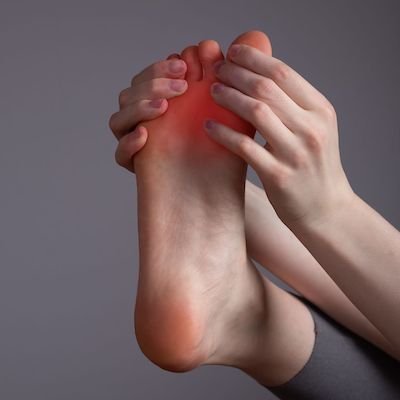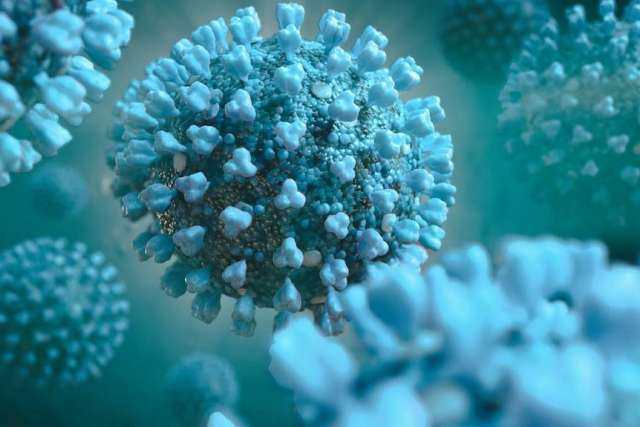Nerve pain, also known as neuropathic pain, is a complex and difficult condition that necessitates individualised therapeutic interventions to reduce symptoms and improve patients’ quality of life. To address the various causes and manifestations of nerve pain, healthcare providers use a multidisciplinary approach that includes pharmacotherapy, interventional procedures, physical therapy, psychological interventions, and complementary modalities. In this comprehensive discussion, we will look at the strategies used by healthcare providers to treat nerve pain and empower patients on their journey to recovery and relief.
Nerve pain is caused by abnormal signalling in the peripheral or central nervous system, including diabetic neuropathy, post-herpetic neuralgia, nerve compression syndromes, and spinal cord injury. Unlike nociceptive pain, which is caused by tissue damage or inflammation, neuropathic pain appears as shooting, burning, or tingling sensations that are frequently accompanied by hyperalgesia, allodynia, and sensory disturbances. Because of its heterogeneous nature and resistance to conventional analgesics, nerve pain requires targeted interventions that address underlying mechanisms and modulate pain pathways.
Pharmacotherapy is essential for managing nerve pain. It includes a variety of medications that target nociceptive processing, neurotransmitter modulation, and neural excitability. Anticonvulsants such as gabapentin and pregabalin have antinociceptive effects by modulating calcium channels and reducing neuronal hyperexcitability, providing relief from neuropathic symptoms while reducing the side effects associated with traditional analgesics. Furthermore, tricyclic antidepressants, serotonin-norepinephrine reuptake inhibitors (SNRIs), and selective serotonin reuptake inhibitors (SSRIs) strengthen descending inhibitory pathways, reducing pain perception and improving mood disturbances.
Opioids, while traditionally reserved for severe neuropathic pain that is resistant to first-line agents, carry inherent risks of tolerance, dependence, and adverse effects, necessitating cautious prescribing and close monitoring to optimise therapeutic outcomes and minimise treatment-related morbidity.
Tapentadol in the Context of Multimodal Pain Management:
Tapentadol’s versatility and efficacy render it a cornerstone of multimodal pain management regimens, facilitating synergistic interactions with complementary therapeutic modalities to achieve comprehensive pain relief. By targeting nociceptive and neuropathic pain pathways, Tapentadol with brand name Tapaday 200mg complements non-pharmacological interventions, such as physical therapy, acupuncture, and transcutaneous electrical nerve stimulation (TENS), augmenting patients’ pain coping repertoire and fostering holistic recovery.
Patient-Centered Care and Shared Decision-Making:
Central to effective pain management is the principle of patient-centered care, wherein healthcare providers collaborate with patients to formulate individualized treatment plans aligned with their goals, values, and preferences. Shared decision-making empowers patients to actively participate in their care, fostering autonomy, dignity, and mutual respect in therapeutic relationships. Transparent communication regarding treatment options, risks, and benefits enables patients to make informed decisions, fostering a sense of empowerment and engagement in their healing journey.
Harnessing Technological Innovations in Pain Management:
In the digital age, technological innovations offer unprecedented opportunities to optimize pain management outcomes and enhance patient engagement. Mobile health applications, wearable devices, and telemedicine platforms facilitate remote monitoring, real-time symptom tracking, and virtual consultations, transcending geographic barriers and enhancing accessibility to specialized pain care services. Moreover, digital therapeutics, such as virtual reality (VR) and augmented reality (AR) interventions, offer immersive experiences that distract attention from pain, modulate affective responses, and promote relaxation, augmenting conventional pain management strategies with cutting-edge modalities.
Interventional Procedures:
Interventional procedures provide targeted interventions that aim to modulate pain signalling, restore neural homeostasis, and provide long-term relief for patients suffering from refractory nerve pain. Epidural steroid injections, nerve blocks, and radiofrequency ablation techniques target specific nerve roots or neural structures involved in neuropathic pain transmission, reducing pain signals and promoting functional recovery. Furthermore, neuromodulation modalities such as spinal cord stimulation (SCS), peripheral nerve stimulation (PNS), and intrathecal drug delivery systems (IDDS) provide neuromodulatory effects that disrupt pain pathways, resulting in long-lasting analgesia and improved patient quality of life.
Physical therapy and rehabilitation help manage nerve pain by addressing musculoskeletal imbalances, increasing functional capacity, and optimising biomechanical alignment. Targeted exercises, manual therapy techniques, and therapeutic modalities are designed to improve range of motion, relieve muscular tension, and restore proprioceptive awareness while minimising compensatory mechanisms and pain exacerbations. Furthermore, patient education on ergonomic principles, activity modification, and self-management strategies enables individuals to take an active role in their recovery, promoting independence, self-efficacy, and resilience in the face of chronic pain challenges.
Comprehensive pain management programmes include psychological interventions to address emotional, cognitive, and behavioural aspects of neuropathic pain. Cognitive-behavioral therapy (CBT), mindfulness-based stress reduction (MBSR), and acceptance and commitment therapy (ACT) help patients develop adaptive coping skills, reframing maladaptive thought patterns, and building resilience in the face of adversity. Furthermore, biofeedback, hypnosis, and relaxation techniques provide non-invasive modalities for modulating autonomic arousal, promoting emotional regulation, and increasing pain coping efficacy, fostering a sense of empowerment and well-being in the face of chronic pain.
Complementary and integrative therapies enhance conventional treatments and promote overall well-being for patients with nerve pain. Acupuncture, massage therapy, and chiropractic care all aim to treat somatic dysfunction, relieve muscular tension, and restore energetic balance, providing symptom relief while also improving patients’ overall quality of life. Furthermore, herbal supplements, dietary changes, and mind-body practices like yoga and tai chi provide holistic approaches that address the interconnectedness of mind, body, and spirit, promoting resilience, vitality, and emotional well-being amidst the complexities of chronic pain.
Related Product: Aspadol 100mg
Collaborative Care and Shared Decision Making:
The principle of collaborative care is central to effective nerve pain management, in which healthcare providers work with patients to develop individualised treatment plans that are tailored to their specific goals, values, and preferences. Shared decision-making allows patients to actively participate in their care, which promotes autonomy, dignity, and mutual respect in therapeutic relationships. Transparent communication about treatment options, risks, and benefits allows patients to make more informed decisions, fostering a sense of empowerment and engagement in their healing journey.
To effectively treat nerve pain, it’s important to take a multidisciplinary approach that addresses the various causes, symptoms, and effects on patients’ physical, emotional, and social health. Healthcare providers strive to alleviate pain, restore function, and improve quality of life for patients suffering from nerve pain syndromes by combining pharmacotherapy, interventional procedures, physical therapy, psychological interventions, and complementary modalities. By embracing collaborative care models and patient-centered principles, healthcare providers and patients form partnerships that go beyond the confines of illness, fostering resilience, empowerment, and hope in the face of chronic pain.



